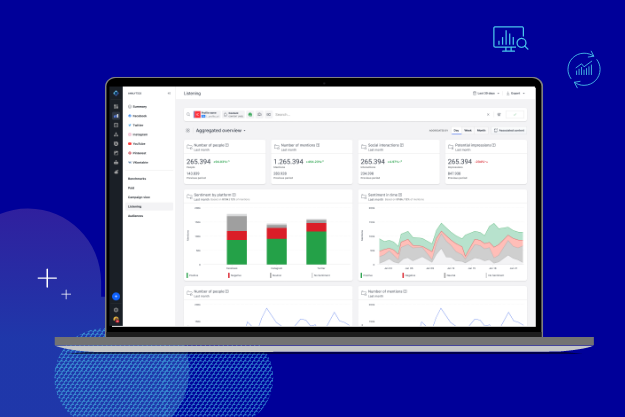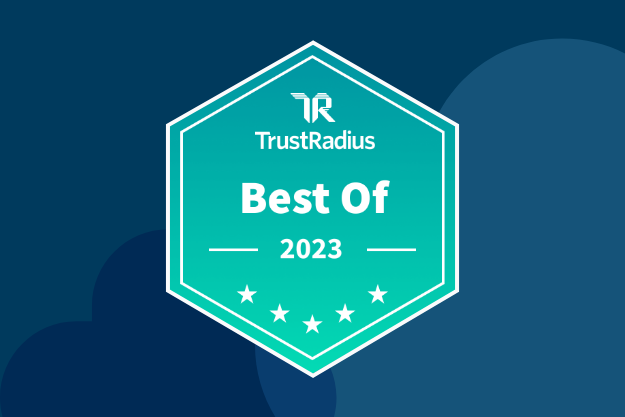Half the world population now uses social media. People are also spending nearly two and half hours a day scrolling through our feeds every day – over 15 hours per week. In fact, many of you reading this likely reached this page via a social media post.
Social media plays an ever-growing role in your current (and future) customers' daily lives and at each step of their customer journey. But how can brands break through countless posts published every day to connect with their audience to drive traffic to their site, let alone entice them to complete the desired action?
That is where a solid social media marketing strategy comes in.
A lot goes into implementing a successful strategy and making sure it stays successful over time. These overall strategies can differ from brand to brand. However, each requires a strong foundation to get the most from your efforts and maximize the impact of your social media campaigns. In this post, we look at nine steps to follow to put this foundation in place.
What Is a Social Media Marketing Strategy?
A social media marketing strategy centers on utilizing social media platforms to reach and engage target audiences to achieve specific business objectives. Its main goals typically focus on publishing content that raises brand awareness, increases community and customer engagement, generates leads, and boosts brand advocacy.
A successful strategy includes a well-executed mix of both organic and paid content:
An organic social media strategy focuses on posting content to build brand awareness, inform your audience how to get the most from your offerings, and grow engagement among your followers and community (such as user-generated content).
A paid social media advertising strategy focuses on targeting users who meet specific criteria to boost interest in your brand and generates leads.
What Is the Impact of Social Media on the Overall Marketing Strategy?
A strong social media presence is vital to a company’s success today.
How has social media changed marketing strategies overall? Unlike traditional marketing methods, social media has empowered brands to reach their community of engaged followers through more targeted approaches.
It also plays a growing and influential role in elevating the customer experience (CX) across all stages of the customer journey.
Consider the following:
A 2020 GlobalWebIndex study found 42% of internet users mainly use social networks when looking for brand information (47% for Gen Z). Also, 27% of global internet users discovered new brands via social media ads during this time.
Social media ads influenced 51% of purchase decisions in 2020.
This channel also plays a key role in more significant purchases. For example, Accenture and Facebook report that 78% of US car buyers said social media played a role in their recent purchase.
Nearly one in two consumers expect a response within one hour when reaching out for support on social media.
Social media is a critical part of any leading brand’s overall digital marketing strategy. As the world grows increasingly connected, social media will only become more influential. Moving forward, it will continue to play a crucial role in delivering seamless pre-and-post omnichannel purchase experiences across the customer journey.
How to Build a Social Media Marketing Strategy That Delivers
From planning to execution, a social media strategy should provide a solid foundation for your efforts and keep everything focused, so you can optimize your social media presence. Following these nine steps helps ensure your strategy does exactly that.
1. Audit your existing efforts
Whether revamping an existing strategy or creating one from scratch, taking stock of what you already have is a key first step.
A social media audit can unearth insights and ideas you can use to guide and inspire your new strategy. Some answers to seek as part of this exercise include:
What type of content currently resonates with your audience? What is underperforming based on your expectations?
Who makes up your current followers? What are their interests?
How often do you currently post, and when? What times seem to garner the most engagement?
What do you think isn’t working? What do others think?
What are your current community management practices? How often do you reply to questions on social media, and how quickly?
This exercise can identify opportunities for improvement and help inform the strategic work ahead of you.
2. Set your business goals and communicate them
Are you looking to grow your social presence and online community? Turn social media into one of your top lead-generation channels?
Confirming your overall social media goals from the start allows for more specific objectives to be set on which to base your strategy. Let’s use the two goals mentioned above as examples:
Grow social presence
Lead generation
- Grow follower base- Boost engagement among followers- Support customer retention efforts- Promote the company as a great place to work
- Convert followers into customers- Convert customers into brand advocates- Drive traffic to landing pages- Help customers narrow consideration set
Communicating these business goals to your internal teams will ensure all stakeholders are on the same page and that all efforts remain focused.
3. Determine the metrics that will gauge your strategy’s success
You've landed on the main goals to achieve with your social media marketing strategy. Now, it's time to pick the social media metrics to track how well your efforts are helping you accomplish these objectives.
For each business goal, break down what actions and engagement you’re seeking from your audience. Be sure to go beyond just traditional metrics to get the real story behind the numbers.
For example, tracking click-through rates (CTR) is clearly crucial when your aim is lead generation. However, going one step further to shine a brighter light on the audience's needs (and your ability to post content that resonates with them) can also unearth additional insights to drive your efforts.
For example:
Interactions per impressions: How effective is your content in eliciting reactions from your target audience? Are users simply scrolling past you in their feeds?
Actions per impressions: Are your posts actually enticing users to take the next step in their journey?
Cost per engagement: Are your ads getting the desired amount of action from your audience? Could your ad spend on each channel be better allocated?
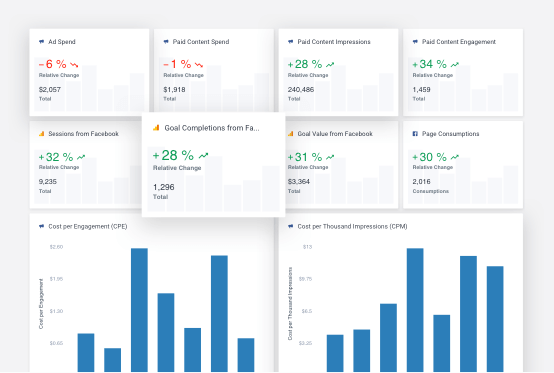
Tracking metrics that provide context and insight into the impact of your efforts will ensure your social media analytics is set up to help you better gauge the impact of your efforts.
4. Know your target audiences, inside and out
Rule No. 1 of content marketing: know your audience. After all, how can you get the desired action from them if you don’t know what needs of theirs you are addressing?
When creating audience personas of your target (ideal) followers, ask yourself:
Who are you targeting with your strategy (demographics, age, interests, etc.)?
In what stage of the customer journey are they? What challenges can you help them address?
How do they spend their time on social media? What are their interests, and what influencers do they follow?
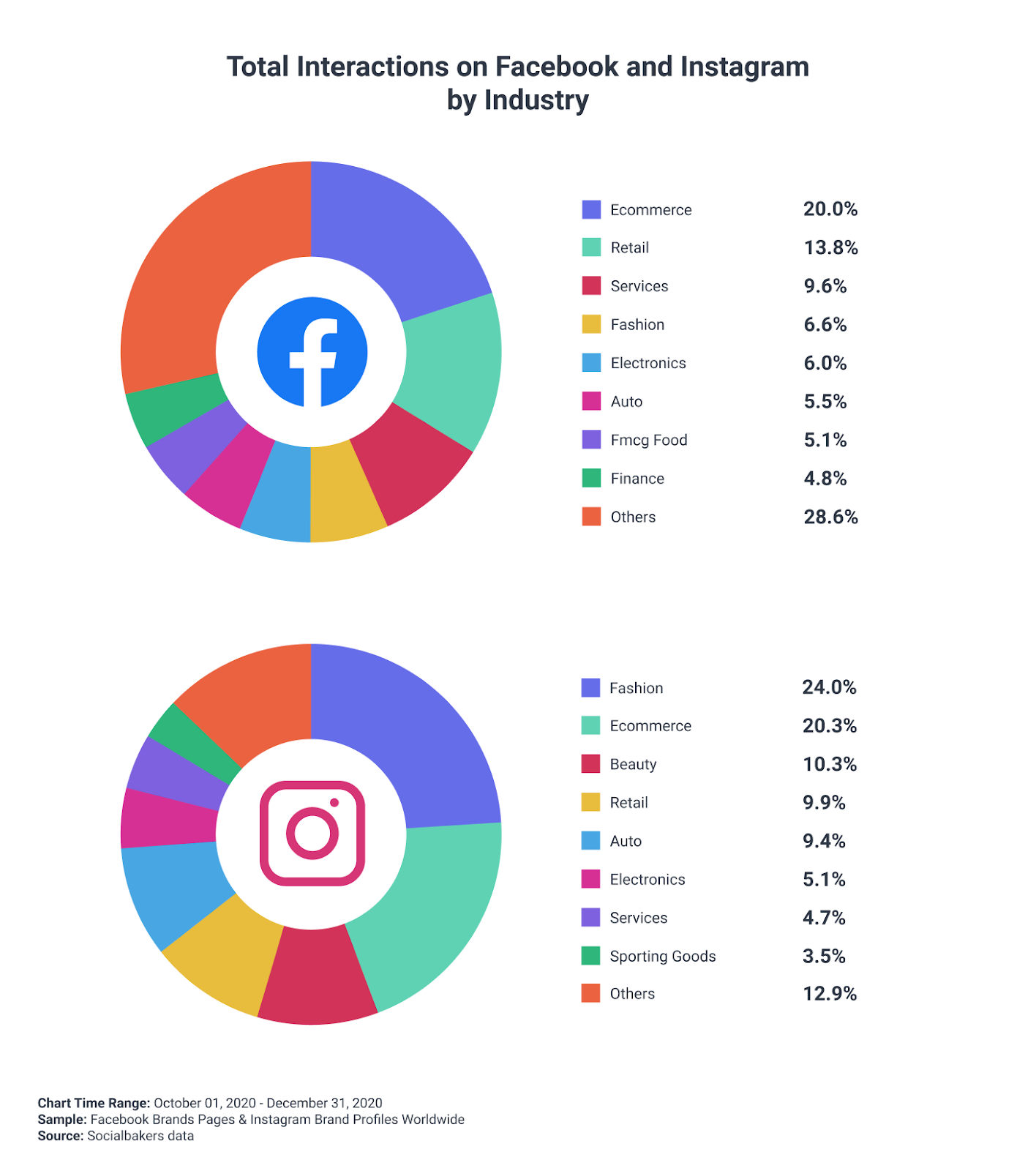
Using an audience segmentation tool can help quickly generate personas across multiple social media platforms. Another common way to gain these insights is to regularly collect the voice of your customers, followers, and even prospects via surveys. That can provide a continuous source of insights to help identify new opportunities and trends, and guide future marketing efforts.
5. Pick the social media platforms where your audiences are
The next step is to determine what social media platforms your brand should look to establish a solid presence.
For each of your target personas, which networks are part of their daily routines? Each has its advantages and caters to users differently. It’s a given today that brands should have a presence on the most popular social media networks (Facebook, Twitter, Instagram, YouTube, LinkedIn). However, your audience insights should also help you determine where else they may be flocking (e.g., TikTok, Pinterest, Clubhouse).
Next, determine how you can best utilize each of them for your specific business goals. Understand the differences and nuances of each platform. For example:
How do users navigate the platform, and what do they look for in their social experiences on each?
What can you gather about each platform’s algorithm, and how can you adapt your efforts?
What content types generate more engagement than others on each platform?
For example, Socialbakers found that Instagram users interacted notably more with carousels than videos, while live video significantly outperformed all other post types in terms of interactions.
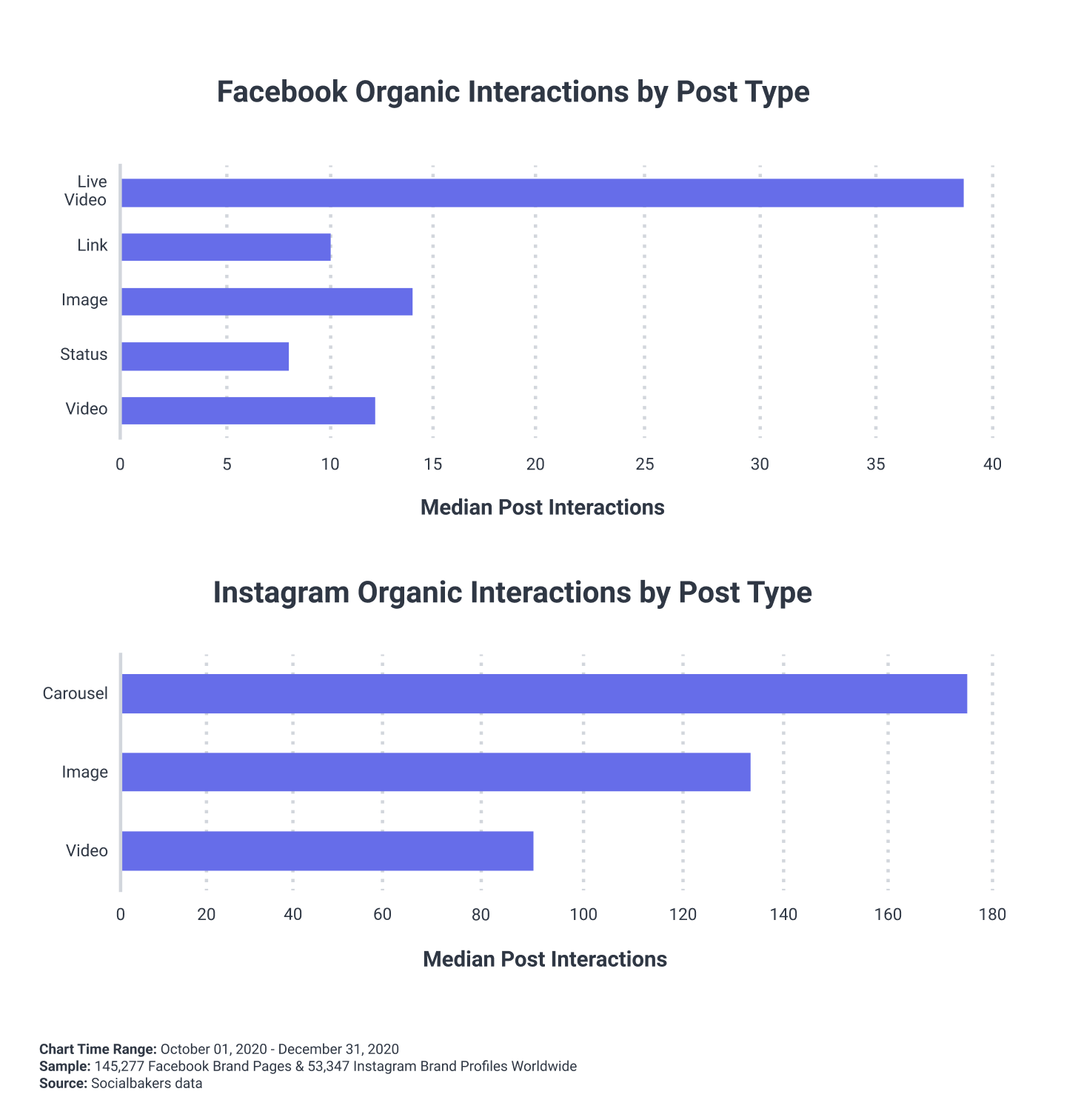
At the same time, longer videos (more than 61 seconds) performed better among Facebook users than shorter videos (less than 24 seconds) when comparing the number of views per impression.
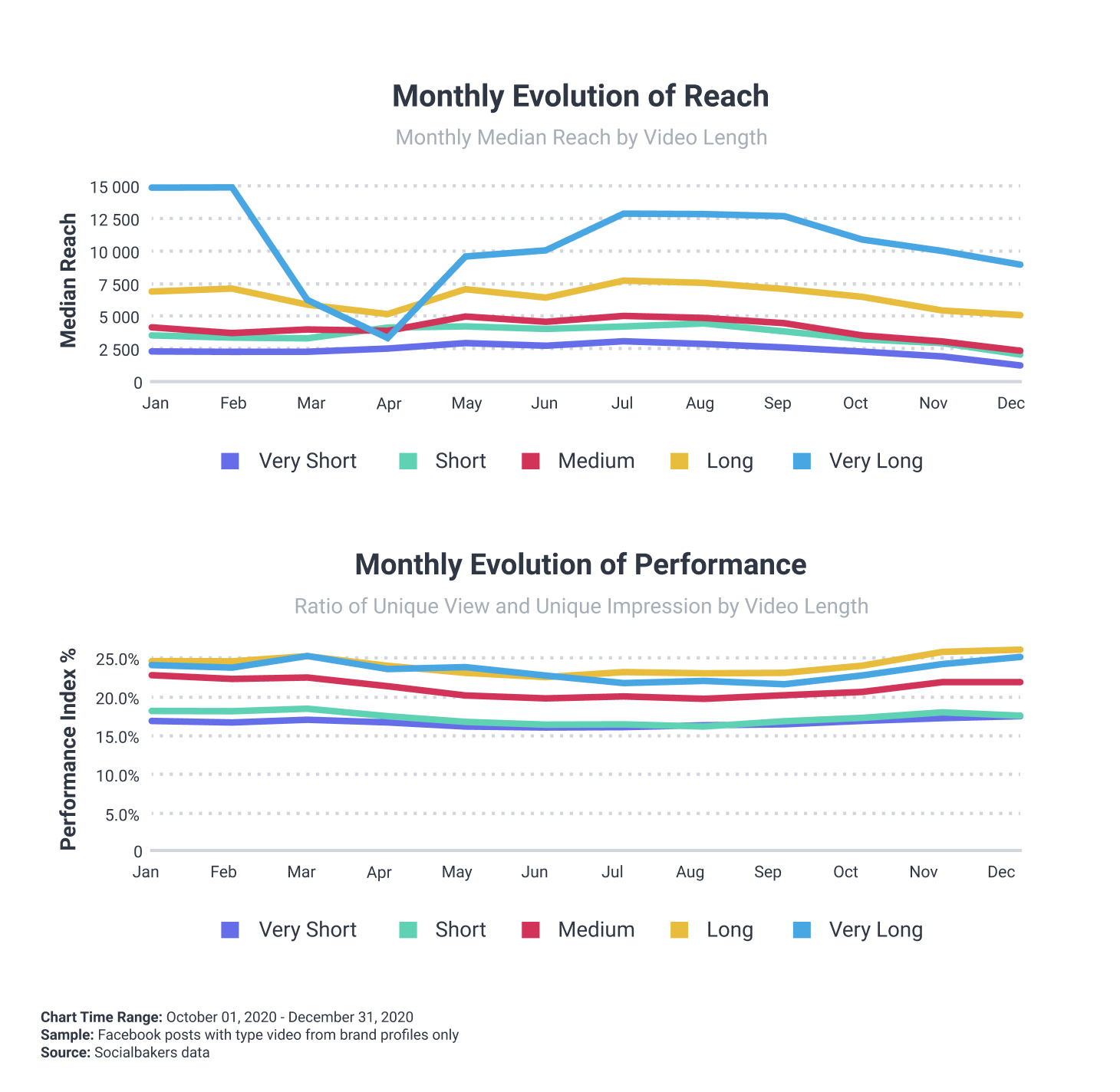
Monitor the latest product updates from each platform to stay on top of any changes that may present opportunities to boost engagement, or require you to adjust your strategy.
6. Create a detailed social media calendar
A consistent flow of solid and engaging content is the hallmark of any successful social media marketing strategy. It fuels a steady growth of followers, keeps existing ones involved, and puts your brand top of mind when new buying journeys begin.
Creating a social media calendar keeps your efforts organized to ensure this steady flow of content. It also helps you do the following:
See your upcoming posts days, weeks, sometimes months ahead of time, as well as what you will be communicating and through which channels.
Identify potential gaps in your communications that you could fill.
Plan out your posting strategy to support any upcoming marketing campaigns.
Better visualize your posts’ timing so you can space them out accordingly (if you post multiple times a day on the same network).
Each network is different, as is the way people use them. Monitoring the latest best practices for each network and taking them into account when building your calendar will keep your efforts organized and help ensure your posts have the best reach.
For example, the best times to post on social media may vary depending on your audience, and even based on where they are. For example, Socialbakers research found that a key difference between the US and UK Facebook users is that UK users are more active during the middle of the day than their US counterparts.
7. Generate content that engages and converts
The hardest step of all. Creating high-quality content and ads that connect with your audience and makes your audience engage is both an art and a science. It requires finding creative ways to stand out amongst the flurry of other posts and ads your target audiences scroll through every day.
Your social media audit (Step 1) and audience insights (Step 4) should act as guideposts for inspiration during this step. Looking at how others approach this step can also provide inspiration and help unlock new ideas.
Here are some questions to ask during this step:
Content Types: Does your audience crave certain types of content that you are not currently generating? Are there content types that generate more engagement than others (e.g., videos, infographics, etc.) for which you could reassign more resources?
Influencers: Are there any micro and macro influencers that your audiences follow or interact with that could open the door for influencer marketing?
Competition: How are other brands engaging similar audiences to yours? What content types seem to connect with their audience, and what is falling flat? Are there content gaps that you could fill on your own profile?
Personalization: Are dynamic ads personalized to the user a possibility? If so, how much personalization can you incorporate to promote social shopping, while not coming off as "creepy"?
Style: Are there brands (including those outside your industry) whose style and approach you may want to emulate?

Your social media content strategy should be broken down and tailored to each platform. For example, your Twitter marketing strategy should differ from your Facebook and Pinterest strategies. For the best results, each should be tailored to these individual platforms’ specific advantages and experiences.
8. Set up a social media listening structure
Posting on social media is only half the battle. Any successful strategy also requires a robust social media listening infrastructure.
Actively keeping a finger on the pulse of how people engage with your content or talk about your brand is essential to determine your strategy’s success. As important, it helps surface insights to fine-tune your strategy and elevate future campaigns.
Here are a few types of reporting that help make up a solid media listening structure:
Audience analysis: Better understand your current audience, their needs, and their expectations. Also, determine what content connects best with specific target audiences.
Sentiment analysis: Make sense of all the conversations taking place about your brand and relevant topics, and prioritize where to focus. This would ideally be automated using machine learning and natural language processing.
Competitive analysis: Gather intel on how your closest competitors connect with their followers. Identify potential new ways to engage with your audience (and gain new ones).

Overall, seek reporting methods that allow the right insights to reach the right people at the right time to enable quick action. Making these insights easily accessible to stakeholders helps them gauge the impact of their efforts and how they can adapt.
This brings us to our final step...
9. Review regularly and adjust accordingly
Your social media marketing strategy should constantly be evolving. Having a governance structure of stakeholders to regularly review the latest data can help ensure the strategy remains top-notch.
This step also helps ensure your team’s efforts remain spent on content that elicits the strongest desired reaction from your target audiences. As a result, not only can it help increase revenue, but potentially reduce costs at the same time.
How Can You Improve Your Social Media Marketing Strategy Even More? Think CX.
Social media plays a growing role in how we shop and in our final purchase decisions. It’s also where many turn to flag issues or seek support to help them get the most out of your offerings.
With social playing an essential role in many customer journeys, any strategy must always have CX in mind. After all, great experiences can lead to higher advocacy, the best type of organic marketing any brand can ask for.
86% of CX professionals expect to compete primarily based on CX in 2021, according to Gartner.
The steps above looked at posting content on your social channels that resonates, and then disseminating insights internally to keep fine-tuning your efforts. Winning social media marketing strategies also extend these steps to provide great customer service experiences, too.
This can include ensuring agents are notified in real-time when a customer flags an issue on social media. In addition, it’s giving them any context about this customer and their brand experiences that could help agents address their needs more efficiently. Also, with over 60% of customers preferring self-serve channels to answer their questions, AI-driven chatbots (like Facebook Messenger bots) are helping reduce agents’ load by fielding common questions.
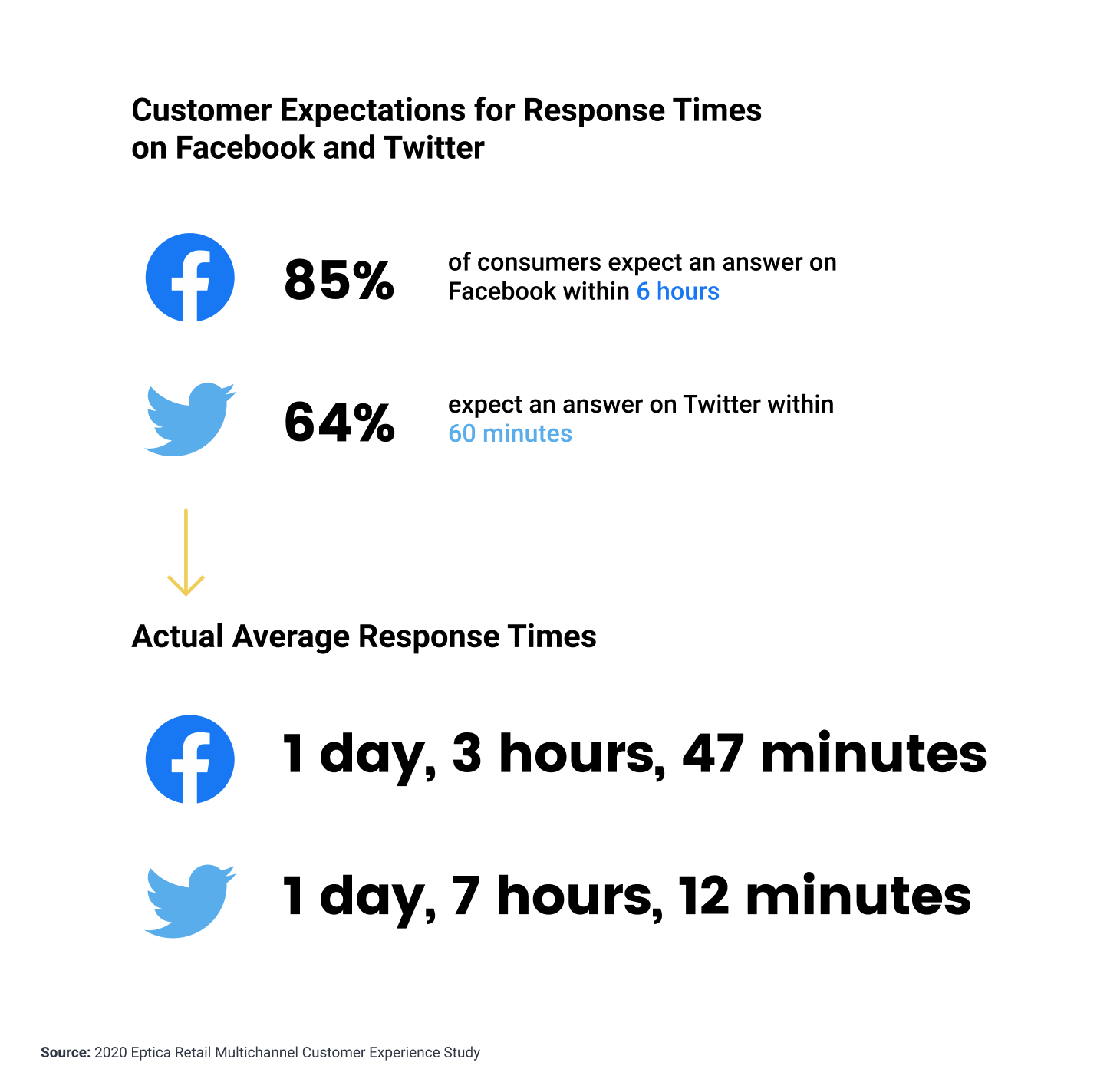
Social media plays an important role in the pre-and-post-purchase customer experience. Having the measures in place to support those who count on social media as one of their go-to channels is essential to offer them the seamless experiences that they crave.
The Takeaway
Empowered by social media, a brand's reach has never extended out further than it does today. This channel is also now an invaluable resource for many as they navigate the customer journey.
A well-executed social media marketing strategy helps you burst through the noise to achieve your business objectives, whether it’s boosting brand awareness, lead generation, or customer engagement and retention.
Just like the customer needs and expectations you're addressing, your social media marketing strategy should always evolve to ensure your efforts are maximized. The steps outlined in this post can provide a solid foundation that allows for flexibility and adaptability in 2021 and beyond.
Editor's Note: This article was originally published on socialbakers.com. Any statistics or statements included in this article were current at the time of original publication.















